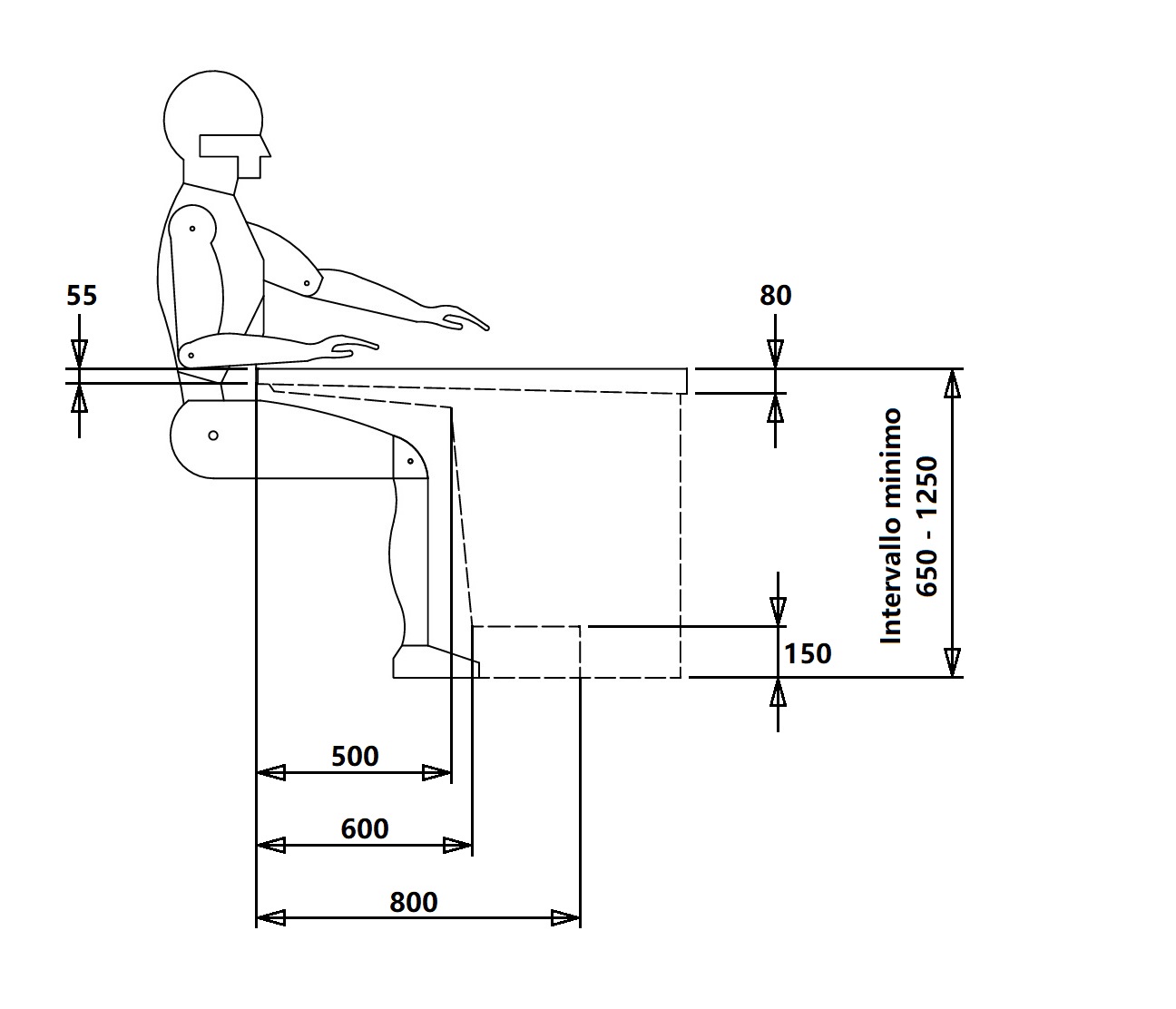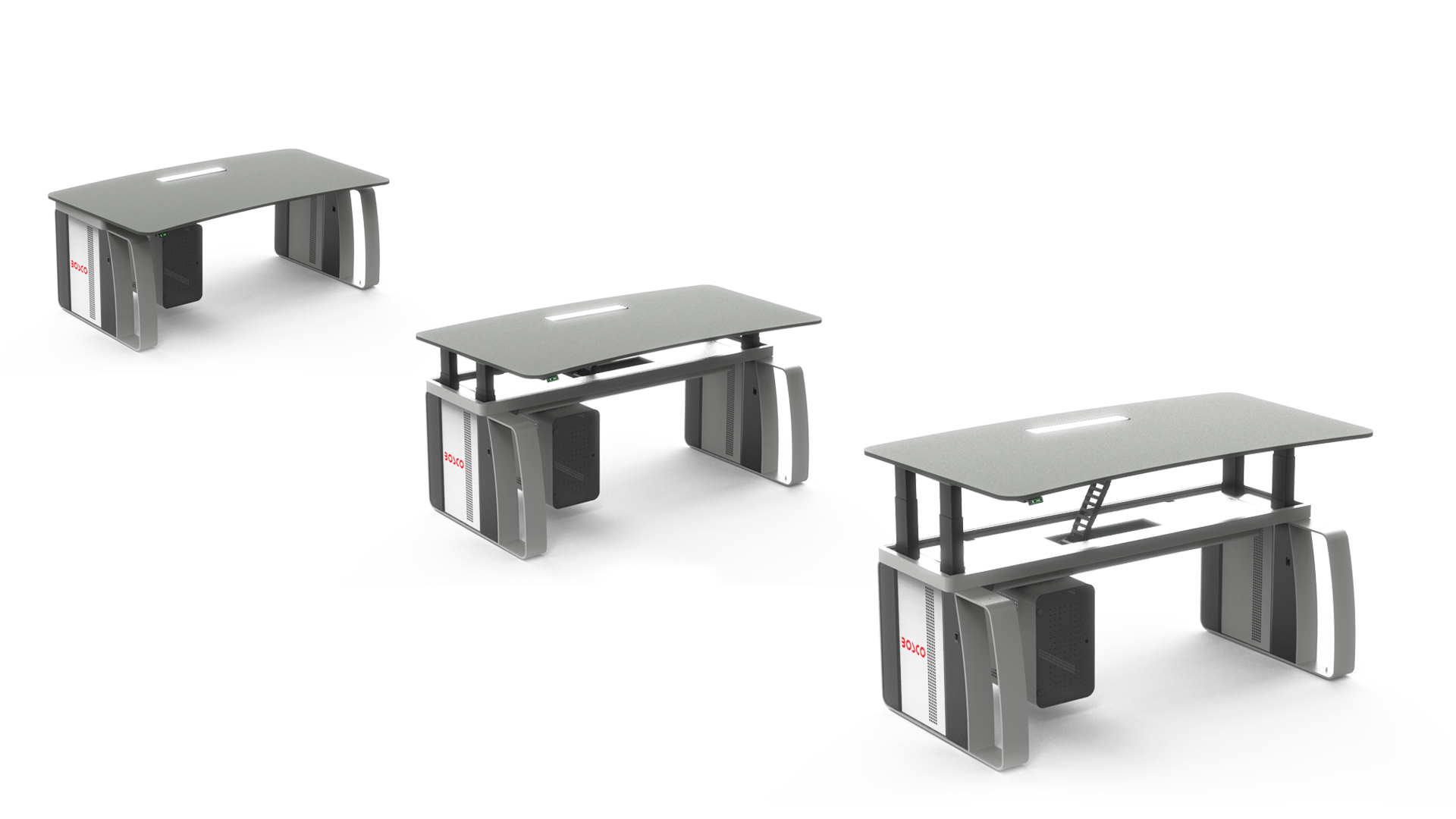

Control centers are often strategic and critical environments in which control and monitoring activities take place 24/7. Furthermore, the operators of a control center often carry out continuous and differentiated work on the same workstation. This is why particular attention must be paid to the ergonomics of workstations, which must promote the physical well-being and comfort of the operator.
According to the standards currently in use (UNI EN 527-1 and ISO 11064-4), the workstations of a control room must be designed to accommodate operators with physical characteristics ranging from the 5th to the 95th percentile of the intended user population . Furthermore, they must be designed according to human capabilities, limitations and needs.
In particular, to correctly design a control console station, two aspects must be considered:
If it is impossible to satisfy such a wide range of users, an adjustable workstation should be considered. If so, the adjusters should be easy and safe to use from a seated position.
In the following figure, the dimensions of an ergonomic workstation according to UNI EN 527-1 are shown for a type C desk (fixed height) for a seated operator, considering the anthropometric data of the European population).
.jpg)
As shown in the figure, a type C (fixed height) desk for a seated operator should respect the following ergonomic dimensions:
Other dimensions to take into consideration:
Dimentions of a Type A Desk (Adjustable Height)
Type A are height adjustable desks, and the ideal choice for a control centre.
The following figure shows the dimensions of an ergonomic workstation according to UNI EN 527-1 for a type A desk (with adjustable height) for an operator in a sitting/standing position, considering the anthropometric data of the European population.

As shown in the figure, a type A (adjustable height) desk for a seated/standing operator should comply with the following ergonomic dimensions:
Other dimensions to take into consideration:
Inside a control center, an operator assumes different postures while carrying out his tasks: sitting, standing or alternating sitting/standing.
As a general principle, the position assumed by the operator depends on:
The ergonomic requirements (according to ISO 11064-4) are determined by the type of task and the postural needs of the operator. As a general principle, any solution should allow posture changing.
A height-adjustable desk that allows to alternate between a sitting and standing position is the best solution. It takes into account the duration and type of work performed, as well as the postural needs of the operator.
Other general requirements and recommendations for a control console are as follows.
Main design problems
A control room workstation must meet more stringent needs than an office desk. Respecting all ergonomic dimensions becomes difficult and technicians often find themselves having to ignore some aspects in favor of more performing and efficient layouts.
Below are some of the most common problems encountered when designing control room consoles.
The purpose of a control room is to constantly manage and control events of various kind to prevent or avoid crise and damage.
The work in a control center is often continuous, 24 hours a day, and differentiated. Due to this, the same workstation is used by multiple operators with different physical characteristics who alternate between sitting and standing position.
A fixed or partiallly adjustable desk is not suitable for this type of environment. A fully adjustable workstation is the most suitable choice.
All Bosco control consoles are adjustable in height from 740 to 1250 mm to ensure the comfort of operators with different heights and to carry out tasks both sitting and standing.

Control Console TeKno - sit and stand system
A control room is the "brain" of a company or organization, where large flows of data from different applications converge.
A desk that ergonomically organizes the many electronic equipment and cable flows is the right choice for a cutting-edge control center.
The need to house many devices inside a control room makes it difficult to always respect ergonomics.
Bosco produces a wide range of consoles that respect ergonomic principles (UNI EN 527-1 and ISO 11064-4) and at the same time allow you to house and organize cables and electronic equipment.
The following image shows an example of an ergonomic Bosco console from the Karma2 series, equipped with cabinets and a 19" rack system for housing equipment, computers, cables, VLTs and more.
Control Console Karma - detail of equipment and cables organization
Ergonomics of Bosco Control Consoles
Generally speaking, to guarantee the operator's well-being, all Bosco consoles include: